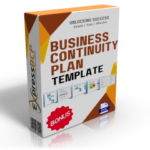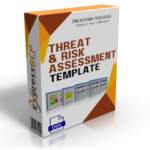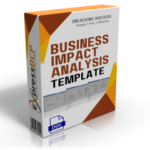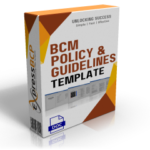In the world of business, downtime isn’t just inconvenient—it’s costly. An hour of IT downtime can cost over $100,000, a figure that’s eye-watering for any business, especially small to medium-sized enterprises (SMEs).
So, what’s the solution? People often confuse “business continuity” with “disaster recovery,” but they serve two different, crucial roles. Understanding the difference can make or break your ability to navigate a crisis effectively.
Let’s break it down in a way that’s relevant to your business—and your bottom line.
Business Continuity: Keeping You in Business
Picture this: a fire hits your office. Maybe a flood or even a power outage. How do you keep serving your customers? How do you ensure your operations don’t grind to a halt? That’s where business continuity (BC) comes in.
Business continuity is about staying operational during a disruption. It’s not about bouncing back afterward—it’s about ensuring your key operations continue no matter what. This includes having remote work options, alternate suppliers, and backup communications. It’s the lifeline that keeps your business moving while you deal with the chaos.
At ExpressBCP, we know that this is more than just having a document gathering dust on a shelf. It’s about practicality and speed. Our business continuity templates are designed to help you create a tailored plan in hours, not weeks.
Actionable Insight: Plan for Remote Work
In today’s world, the ability to work remotely is crucial. Make sure your business continuity plan includes options for employees to work from home or alternate locations seamlessly. With ExpressBCP’s templates, you’ll have a roadmap to make this happen quickly and efficiently.
Disaster Recovery: Fixing What’s Broken
Now, let’s talk about disaster recovery (DR). If business continuity is about keeping the wheels turning, disaster recovery is about repairing the damage once the immediate crisis is over. It’s reactive, focusing on restoring systems, recovering lost data, and getting your business back to where it was before the disruption.
For many organizations, the technical aspects of disaster recovery can feel overwhelming. That’s why ExpressBCP provides templates that not only guide you through recovery planning but also integrate seamlessly with your business continuity efforts, giving you a complete solution.
Actionable Insight: Automate Your Backups
One of the easiest ways to ensure quick recovery after a disaster is through automated, cloud-based backups. Make sure your disaster recovery plan includes regular, automatic backups so you can restore operations without missing a beat. Our templates help you outline these steps clearly, so nothing gets overlooked.
The Key Differences—In Plain English
So, what’s the bottom line?
- Business Continuity ensures you can keep serving your customers during a crisis. It’s proactive.
- Disaster Recovery focuses on getting back to normal after the crisis. It’s reactive.
Having both a BC and DR plan in place is crucial to not just surviving a disruption but minimizing the impact on your revenue, customers, and reputation.
How Business Continuity and Disaster Recovery Work Together
Here’s where it gets interesting: your business continuity and disaster recovery plans should work hand in hand. One without the other leaves a gap. A gap that could be costly.
With ExpressBCP’s templates, we make sure these plans are cohesive and comprehensive. You won’t have to worry about a mismatch between your continuity efforts and your recovery strategies. They’re built to align, helping you streamline your crisis response and avoid unnecessary downtime.
Why Both Matter for Your Business
Whether it’s a natural disaster, cyberattack, or even just a power failure, all organizations face real risks every day. It’s no longer about if a disruption will happen—it’s about when. A complete business continuity and disaster recovery plan can be the difference between staying in business and shutting down.
Final Thoughts: Be Prepared, Be Resilient
At ExpressBCP, we get it. Running complex business operations means juggling a lot of priorities. That’s why we’ve created easy-to-use, customizable templates to help you build effective business continuity and disaster recovery plans without the hassle. We cut out the complexity so you can focus on keeping your business strong—even when the unexpected happens.
Invest in your resilience today. With our templates, you’ll have the peace of mind that comes from knowing you’re prepared for whatever comes next.







